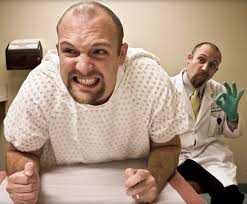hemorrhoids treatment

Hemorrhoids can be very uncomfortable. Hemorrhoids cause pain, severe itching and difficulty sitting. There are a variety of methods used for hemorrhoids treatment.
What are Hemorrhoids?
Hemorrhoids are swollen veins located around the anus or in the lower rectum. About 50 percent of adults experienced the symptoms of hemorrhoids by the age of 50.
Hemorrhoids can either be internal or external. Internal hemorrhoids develop within the anus or rectum. External hemorrhoids develop outside of the anus. Hemorrhoids are also known as piles.
External hemorrhoids are the most common and most troublesome. Hemorrhoids cause pain, severe itching, and difficulty sitting. Fortunately, there are a variety .of hemorrhoids treatment methods that help to mitigate this uncomfortable condition.
Common Non-surgical Hemorrhoids Treatment Methods
Self-applied hemorrhoids treatment can often produce positive results, depending on severity and other associated factors.
Hemorrhoids often get better without surgery or even procedures your doctor can do in the office. Some successful methods start with over-the-counter products and lifestyle changes as a first line of hemorrhoids treatment. (If you’re pregnant, you should talk to your doctor before you try any medicine or change your diet.)
Warm (but not hot) baths are a time-honored therapy of hemorrhoids treatment. Sit in about 3 inches of warm water for 15 minutes or so, several times a day. This helps reduce swelling in the area and relaxes your clenching sphincter muscle. It’s especially good after defecating (pooping).
Put a little petroleum jelly just inside your anus to make pooping hurt less. Don’t force it!
Dab witch hazel on irritated hemorrhoids, or use over-the-counter (OTC) creams or ointments made for hemorrhoid symptoms. OTC 1% hydrocortisone or 4% – 5% lidocaine cream on the skin outside the anus (not inside) can relieve itching, too. But don’t use either for longer than a week unless your doctor says it’s OK. The lidocaine in some OTC topical numbing creams works by blocking the nerve transmission of pain, burn and itch that go to the brain. These OTC lidocaine numbing creams can actually substantially numb the effected painful and itchy hemorrhoids treatment area.
You can purchase lidocaine cream OTC at some retail pharmacies or by going online.
A simple cold pack applied to the hemorrhoids treatment area for a few minutes can also numb it and bring down the swelling.
What are the symptoms of hemorrhoids?
Symptoms of hemorrhoids include:
- extreme itching around the anus
- irritation and pain around the anus
- itchy or painful lump or swelling near your anus
- fecal leakage
- painful bowel movements
- blood on your tissue after having a bowel movement
Although hemorrhoids are painful, they aren’t life-threatening and often go away on their own without clinical hemorrhoids treatment. If you have them often, you may develop symptoms of anemia, such as weakness and pale skin due to blood loss, though this is rare.
High-Fiber Diet as a Hemorrhoids Treatment
A diet rich in high-fiber foods and with few processed foods is a good hemorrhoids treatment tool. Eat mostly vegetables, fruit, nuts, and whole grains to avoid constipation.
If you can’t get enough fiber from food, your doctor may want you to take a fiber supplement or stool softener. Don’t take laxatives, because they can cause diarrhea that could irritate hemorrhoids.
Drink seven to eight glasses of water each day, at least a half-gallon total. If you’re very active or you live in a hot climate, you may need even more.
Even if your doctor prescribes medication or suggests surgery, you’ll probably need to change your diet. Introduce new foods slowly to avoid gas.
high-fiber-foods
Common Medical Hemorrhoids Treatment Procedures
If your symptoms are severe or aren’t getting better after a couple of weeks, your doctor may want do a procedure to shrink or remove the hemorrhoids. Many can be performed in-office.
Injection. Your doctor can inject an internal hemorrhoid with a solution to create a scar and close off the hemorrhoid.
Other more involved medical hemorrhoids treatment procedures include:
Rubber band ligation. This procedure is often done on prolapsed hemorrhoids, internal hemorrhoids that can be seen or felt outside. Using a special tool, the doctor puts a tiny rubber band around the hemorrhoid, which shuts off its blood supply almost instantly. Within a week, the hemorrhoid will dry up, shrink, and fall off.
Coagulation or cauterization. With an electric probe, a laser beam, or an infrared light, your doctor will make a tiny burn to remove tissue and painlessly seal the end of the hemorrhoid, causing it to close off and shrink. This works best for prolapsed hemorrhoids.
This information is not intended as medical advice and should not be used to take the place of advice from your doctor. This information should not be used to diagnose of treat medical conditions.

